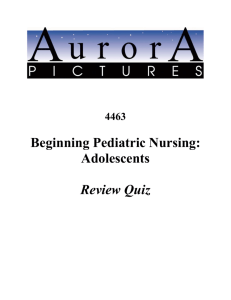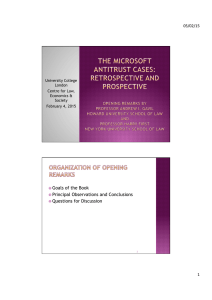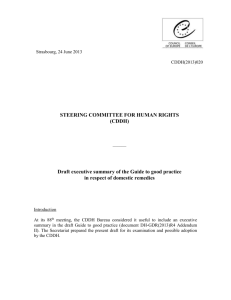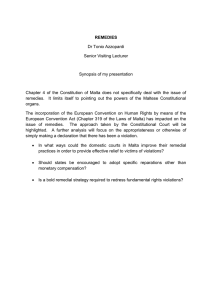Guidance for the use of homely remedies in care homes
advertisement
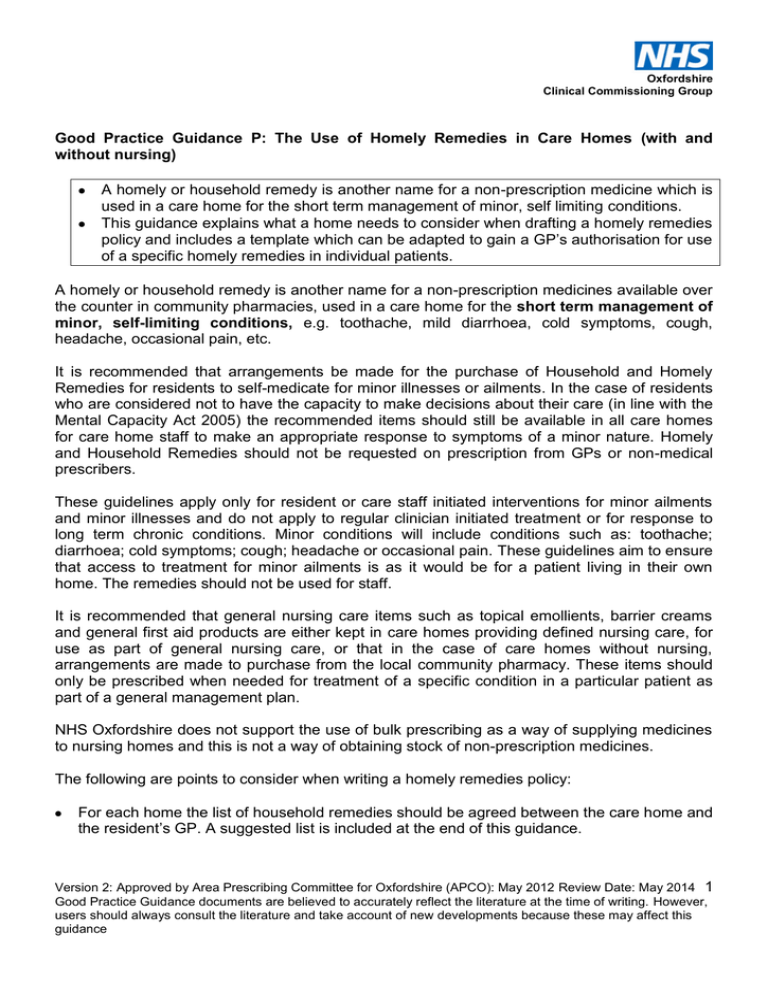
Oxfordshire Clinical Commissioning Group Good Practice Guidance P: The Use of Homely Remedies in Care Homes (with and without nursing) A homely or household remedy is another name for a non-prescription medicine which is used in a care home for the short term management of minor, self limiting conditions. This guidance explains what a home needs to consider when drafting a homely remedies policy and includes a template which can be adapted to gain a GP’s authorisation for use of a specific homely remedies in individual patients. A homely or household remedy is another name for a non-prescription medicines available over the counter in community pharmacies, used in a care home for the short term management of minor, self-limiting conditions, e.g. toothache, mild diarrhoea, cold symptoms, cough, headache, occasional pain, etc. It is recommended that arrangements be made for the purchase of Household and Homely Remedies for residents to self-medicate for minor illnesses or ailments. In the case of residents who are considered not to have the capacity to make decisions about their care (in line with the Mental Capacity Act 2005) the recommended items should still be available in all care homes for care home staff to make an appropriate response to symptoms of a minor nature. Homely and Household Remedies should not be requested on prescription from GPs or non-medical prescribers. These guidelines apply only for resident or care staff initiated interventions for minor ailments and minor illnesses and do not apply to regular clinician initiated treatment or for response to long term chronic conditions. Minor conditions will include conditions such as: toothache; diarrhoea; cold symptoms; cough; headache or occasional pain. These guidelines aim to ensure that access to treatment for minor ailments is as it would be for a patient living in their own home. The remedies should not be used for staff. It is recommended that general nursing care items such as topical emollients, barrier creams and general first aid products are either kept in care homes providing defined nursing care, for use as part of general nursing care, or that in the case of care homes without nursing, arrangements are made to purchase from the local community pharmacy. These items should only be prescribed when needed for treatment of a specific condition in a particular patient as part of a general management plan. NHS Oxfordshire does not support the use of bulk prescribing as a way of supplying medicines to nursing homes and this is not a way of obtaining stock of non-prescription medicines. The following are points to consider when writing a homely remedies policy: For each home the list of household remedies should be agreed between the care home and the resident’s GP. A suggested list is included at the end of this guidance. Version 2: Approved by Area Prescribing Committee for Oxfordshire (APCO): May 2012 Review Date: May 2014 1 Good Practice Guidance documents are believed to accurately reflect the literature at the time of writing. However, users should always consult the literature and take account of new developments because these may affect this guidance Oxfordshire Clinical Commissioning Group Household remedies should only be administered in accordance with the manufacturer's directions and only to those residents whose GP has agreed to their use. A record of that agreement should be made in the individual resident's medication profile. Household remedies should not be used for more than an agreed period, which should be stated in the policy. It is recommended that administration should not continue for more than 48 hours before consulting the resident's GP. The community pharmacist supplying the Home and/or giving advice on their NHS Oxfordshire care home advice visits may be approached to provide advice on uses, doses and possible interactions with prescribed medicines. Advice on the shelf life of products once opened may also be obtained from the community pharmacist. The home should consider how they will respond to minor ailments in residents who are unable to make decisions about their care. The administration of household remedies must be recorded in the resident’s record stating drug, dose, time, date, administered by, reason for administration. E.g. Paracetamol 2 x 500mg tablets 10.00 a.m. 20.3.12. S. Brown: for headache. Recording is best done on the same sheet as the record of administration of prescribed medicines e.g. by using the back of the medication administration record sheet (MAR). Care should be taken to ensure that residents are not taking non-prescribed medicines that they have purchased or have been given, in addition to the household remedies being administered by the home’s staff. Homely remedies should be stored within the medication storage area, but separated from prescribed medication. They should not be labelled for individual residents, expiry dates should be checked regularly and only small packs/bottles of each item should be held in the home. Each home must have a written procedure which includes the following: household remedies to be available in home with a list of indications for which they can be used the agreed dose and maximum period of use arrangements for agreement from resident’s GP procedure for recording household remedies administered procedure for checking household remedies required against medication purchased by or for residents how to obtain the resident’s consent to treatment that the doctor has not prescribed how the receipt, administration and disposal of medicines will be recorded Version 2: Approved by Area Prescribing Committee for Oxfordshire (APCO): May 2012 Review Date: May 2014 2 Good Practice Guidance documents are believed to accurately reflect the literature at the time of writing. However, users should always consult the literature and take account of new developments because these may affect this guidance Oxfordshire Clinical Commissioning Group Appendix 1 includes a suggested list of remedies to be considered and a possible template for you to agree a homely remedies list for each resident with your GP. The guidelines will be reviewed bi-annually to ensure they meet the needs of Oxfordshire clinicians, care home staff and user groups across NHS Oxfordshire. Appendix 1: a proposed template for agreeing which homely remedies are suitable for administration to each resident in your home. This may be copied or amended as required, but should be used as part of a homely remedies policy. Resident ................................................................................... Authorisation to administer homely remedies for a maximum of 48 hours for the treatment of the conditions listed below. After this period, if symptoms persist the GP will be contacted. (GP to delete item(s) from this list, if they are not appropriate for this resident) GP........................................... signature AND name ...................................................... List agreed (date) ................................. Agreed drugs for use as Homely Remedies: Minor illness requiring treatment Cough Drug/ Medicine Maximum dose to be taken at one time Two 5ml spoonful Indigestion Simple Linctus Peptac liquid Diarrhoea Rehydration sachets One sachet Constipation Senna tablets or syrup Headache, toothache or Muscular aches e.g. backache Paracetamol Two to four tablets or two to four 5ml spoonfuls of syrup One or two 500mg tablets Two 5ml spoonful How often it can it be given Repeat after 4 hours Up to four times a day and at night Repeat regularly as required Once a day usually at bedtime Doses NOT closer than 4 hours apart NOT more than 8 tablets in 24 hours. N.B. Care must be taken that other medicines containing paracetamol are not being used. Review date: Version 2: Approved by Area Prescribing Committee for Oxfordshire (APCO): May 2012 Review Date: May 2014 3 Good Practice Guidance documents are believed to accurately reflect the literature at the time of writing. However, users should always consult the literature and take account of new developments because these may affect this guidance
